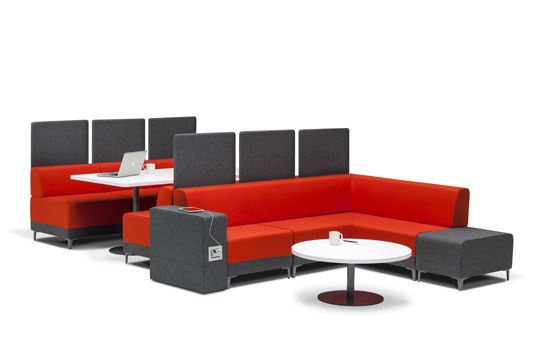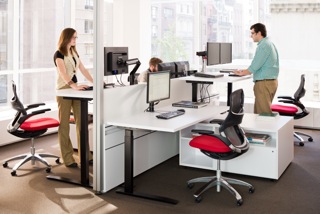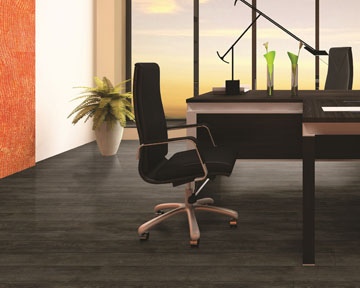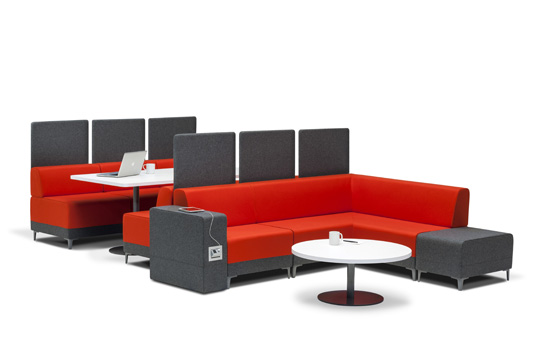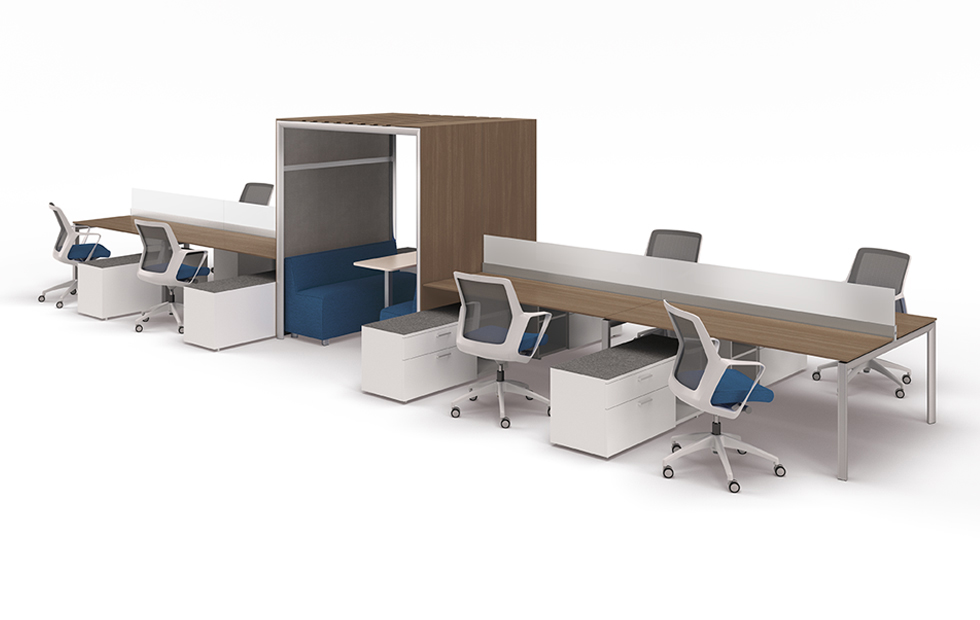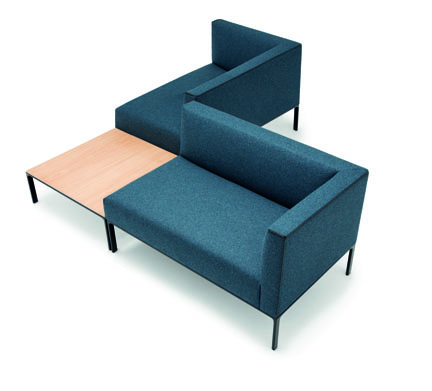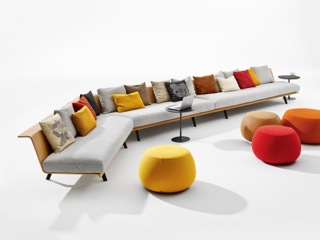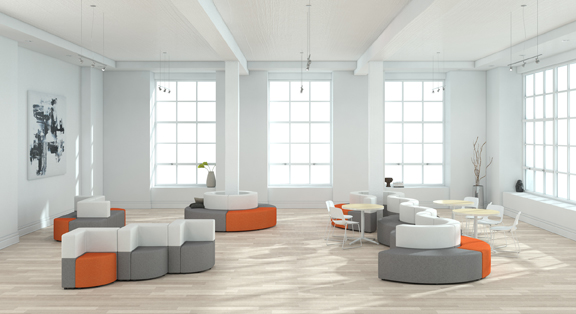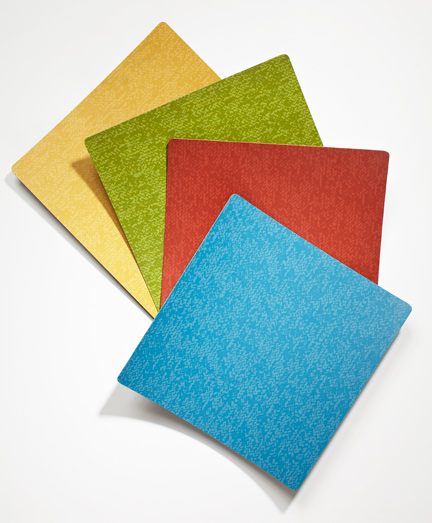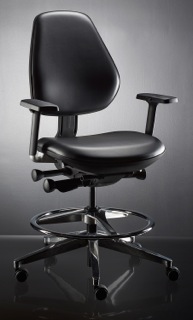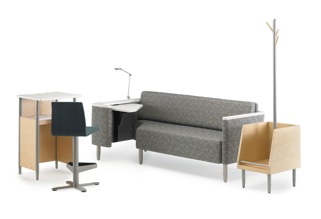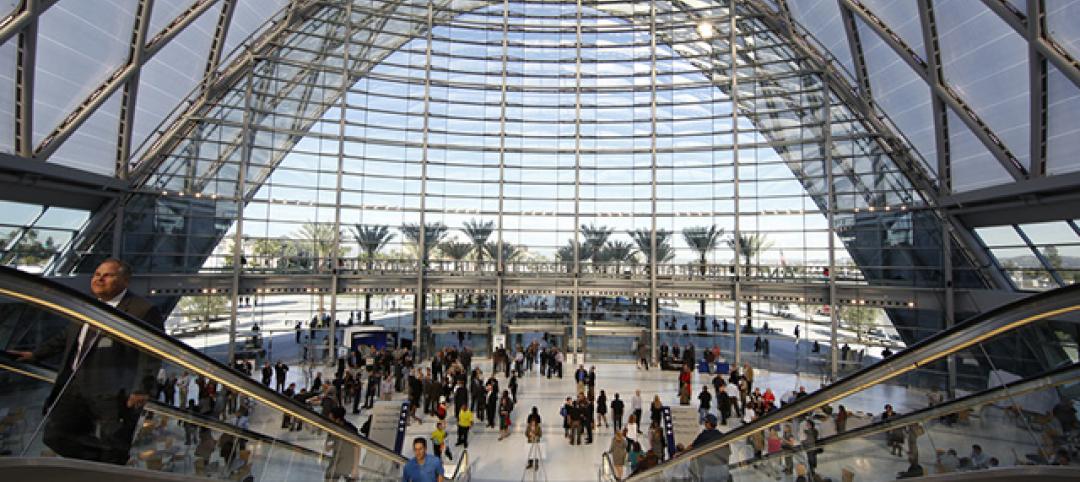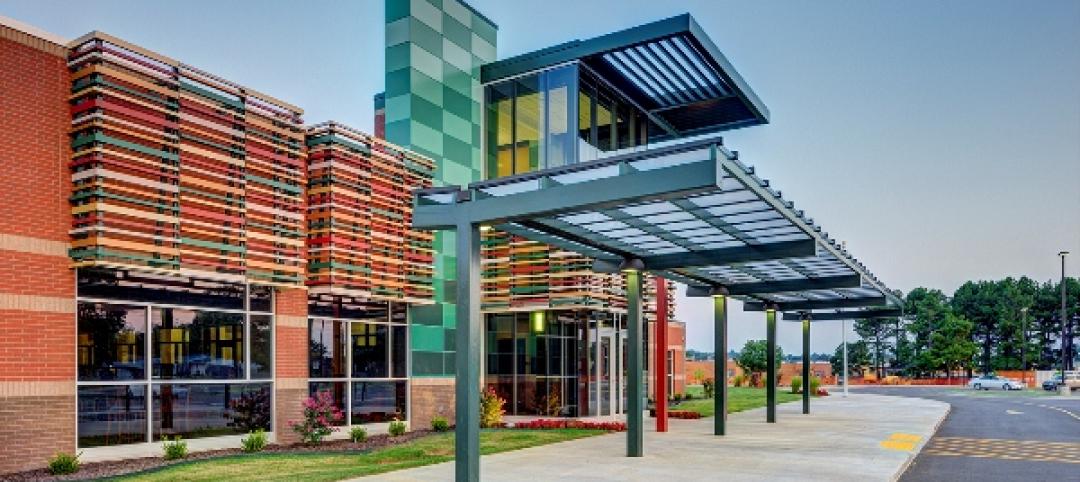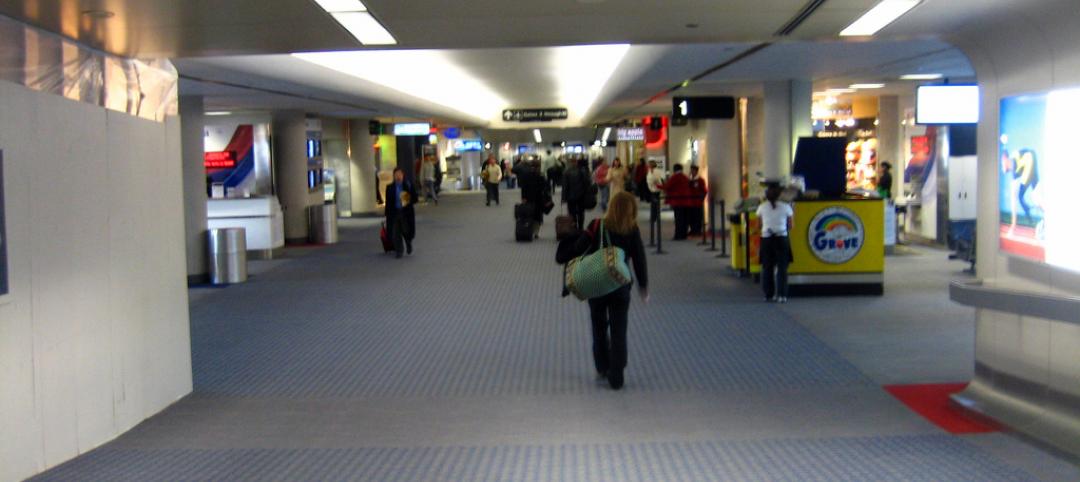In order to set the stage for this year’s NeoCon, show management tapped its advisory committee of top commercial design firms to share their insight on what’s hot right now and what lies ahead across key vertical sectors.
Leaders at Gensler, FXFOWLE, HOK, and Mancini Duffy weighed in on trends and corresponding product picks. Here are their top interior design trends:
Office/Corporate Design
Health & Wellness and Technology Are Key Features in the Office
“Finally, Baby Boomers and Millennials have found a passionate meeting of the minds on a topic that is also very personal: health and wellness,” says Workplace Strategist Priyanka Agrawala of New York-based design firm Mancini Duffy. “Convergence on this topic is also perhaps why organizations trying to attract new talent, retain experienced staff, encourage knowledge transfer, and increase productivity and engagement, think that investing in this area is a no-brainer.
The A&D industry is gearing up to help support this new business initiative, which also aligns with more established sustainable design practices. Green design and LEED principles have always passively contributed to wellness by creating good indoor air quality. Now we’re seeing circadian lighting; sit-stand desks; ergonomic lounge seating that also accommodates mobile technology; biophillic design elements like “live walls” and plants and gardens that bring the outdoors inside added to the mix, in addition to more active design concepts."
Active design principles that promote wellness include diverse work settings that not only support different work styles, but also encourage people to get up from their seats and move. As mobility within the office increases, so does the demand for 'plug and play' solutions that include collaborative spaces as well as individual desks and seating with built-in charging stations, stashable storage for technology, foldable tablet arms and side tables, and mobile marker/technology boards.”
Sarah Gerber, Senior Designer, Associate, FXFOWLE, elaborates on the changing corporate design landscape, noting, “Technology is having an enormous impact on furniture design, especially through ergonomics. The trend is not necessarily about incorporating technology, but responding to how we position ourselves when we use these technologies.
In addition, the ‘performative’ workplace is becoming a balanced workplace as organizations seek to find the right proportion of interactive and focused work. The future of the workplace is not a “one size fits all” approach; rather, it’s an innovative response to the growing amount of data at our disposal.”
Hospitality
Moving Toward More Flexible & Authentic Experiences
“Authenticity is fast becoming another overarching trend for all demographics," adds Monk. “Consistency in appearance and experience used to be the most important quality for hotel chains to convey. The idea was that wherever you went, a name brand looked and felt the same so guests could take comfort in the familiar.
These days, with technology and the Internet giving us access to an array of information, imagery and virtual experiences, travelers want to authentically experience the culture of the locale in which they are staying. Firms have responded to this desire by focusing on brand and property distinction while creating more unique experiences and products that tap into local flavors.”
Healthcare
Healthcare Sector Reacts To New Health Laws In Project & Product Design
Tama Duffy Day, Health & Wellness Director of Gensler, remarks, “As eight million new Affordable Care Act (ACA) enrollees have access to healthcare, the industry is responding by providing expanded and new ways of receiving care. Health systems are increasing their coverage and new players are moving the industry toward retail health.
Designers are shaping these clinical experiences in every way—from brand recognition and consumer-driven first-impression appeal, to efficient clinical floor plans in support of increasing the patient and provider interactions. Given this significant and fast-moving change in the industry, products need to keep up with the demand—for example, mobile small-scale technology carts, exam tables that can also be a chair, technology integrated into white boards, and spaces that can be used for telemedicine.”
With the Affordable Care Act placing more emphasis on the effectiveness of patient care and experience, the traditional model of hospital design is being rethought and reimagined by healthcare designers across the board—from architects and interior designers to product and equipment designers, and service and UX designers.
This renewed focus on human-centric outcomes for end users—the patients and their individual needs as well as the healthcare professionals that work in these environments every day—is bringing about a shift in scale from large-umbrella hospital campuses that house every type of care, to individual clinics and ambulatory care facilities.
Meanwhile, patient surveys indicate the desire for medical environments that are less sterile and “clinical” and more like a home. Designers are responding with solutions to improve experiential and usability factors for patients and their caregivers. These include decreasing noise and increasing privacy, providing more natural light, improving the accessibility, movement and ergonomics of furniture and equipment, enabling multitasking, and creating surfaces that are easier to clean.
Related Stories
| Dec 15, 2014
HOK-designed Anaheim Regional transit hub opens, expected to serve three million per year
ARTIC’s flexible design ensures that it can serve as a southern terminus for California’s future high-speed rail system.
| Dec 8, 2014
Moshe Safdie wants to reinvent airports with Jewel Changi Airport addition
A new addition to Singapore's Changi Airport, designed by Moshe Safdie, will feature a waterfall and extensive indoor gardens.
| Nov 19, 2014
The evolution of airport design and construction [infographic]
Safety, consumer demand, and the new economics of flight are three of the major factors shaping how airlines and airport officials are approaching the need for upgrades and renovations, writes Skanska USA's MacAdam Glinn.
| Nov 18, 2014
Grimshaw releases newest designs for world’s largest airport
The airport is expected to serve 90 million passengers a year on the opening of the first phase, and more than 150 million annually after project completion in 2018.
| Nov 14, 2014
JetBlue opens Gensler-designed International Concourse at JFK
The 175,000-sf extension includes the conversion of three existing gates to international swing gates, and the addition of three new international swing gates.
Sponsored | | Nov 12, 2014
Eye-popping façade highlights renovation, addition at Chaffin Junior High School
The new distinctive main entrance accentuates the public face of the school with an aluminum tube “baguette” system.
| Oct 26, 2014
New York initiates design competition for upgrading LaGuardia, Kennedy airports
New York Gov. Andrew Cuomo said that the state would open design competitions to fix and upgrade New York City’s aging airports. But financing construction is still unsettled.
| Oct 16, 2014
Perkins+Will white paper examines alternatives to flame retardant building materials
The white paper includes a list of 193 flame retardants, including 29 discovered in building and household products, 50 found in the indoor environment, and 33 in human blood, milk, and tissues.
| Oct 12, 2014
AIA 2030 commitment: Five years on, are we any closer to net-zero?
This year marks the fifth anniversary of the American Institute of Architects’ effort to have architecture firms voluntarily pledge net-zero energy design for all their buildings by 2030.
| Sep 24, 2014
Architecture billings see continued strength, led by institutional sector
On the heels of recording its strongest pace of growth since 2007, there continues to be an increasing level of demand for design services signaled in the latest Architecture Billings Index.


